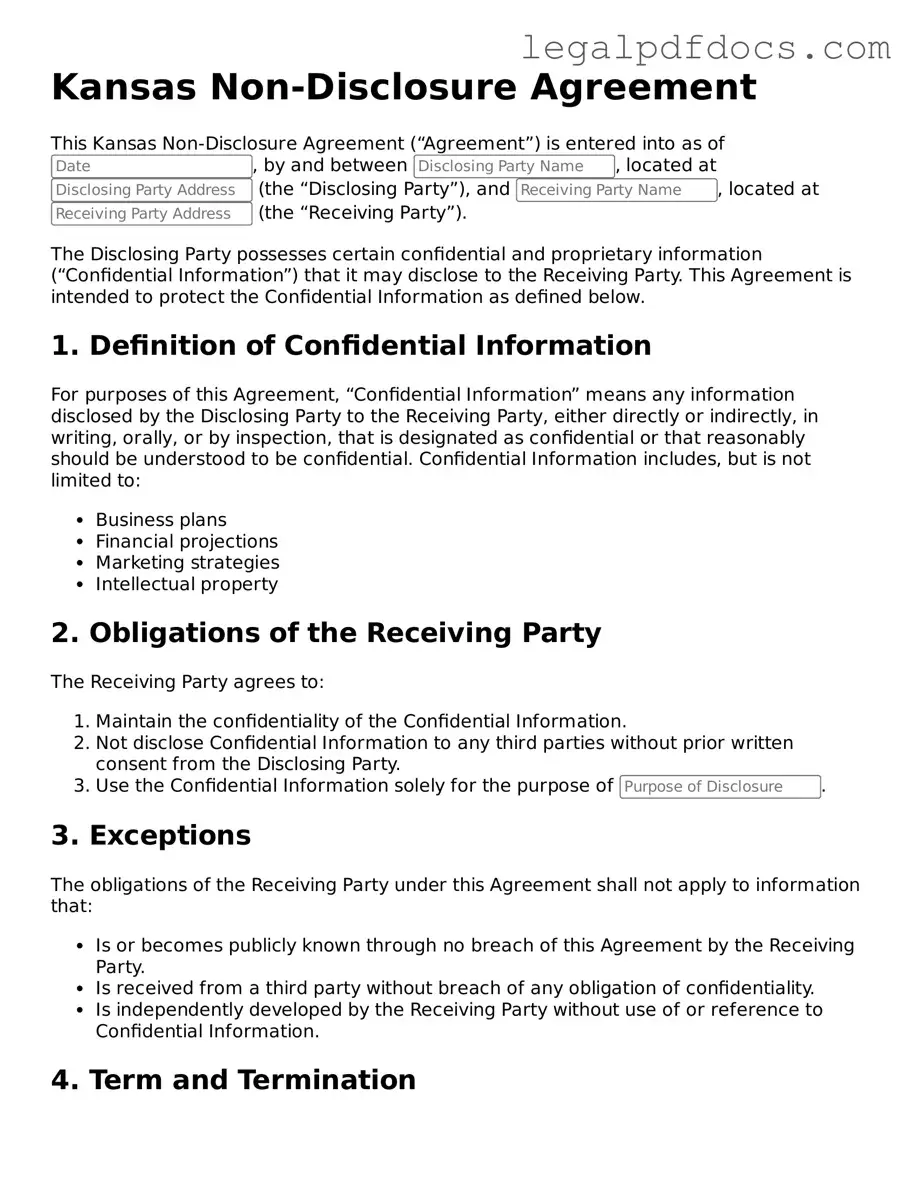In the realm of business and professional relationships, confidentiality often plays a crucial role in fostering trust and protecting sensitive information. The Kansas Non-disclosure Agreement (NDA) form serves as a vital tool for individuals and organizations looking to safeguard proprietary data, trade secrets, or other confidential materials from unauthorized disclosure. This legally binding document outlines the obligations of the parties involved, detailing what information is considered confidential and the circumstances under which it may be shared. It also specifies the duration of the confidentiality obligations, ensuring that sensitive information remains protected for an agreed-upon period. By clearly defining the terms and conditions, the Kansas NDA helps mitigate the risks associated with information leaks and establishes a framework for legal recourse should any breach occur. Understanding the significance and components of this form can empower parties to engage in business with confidence, knowing that their valuable information is secure.
